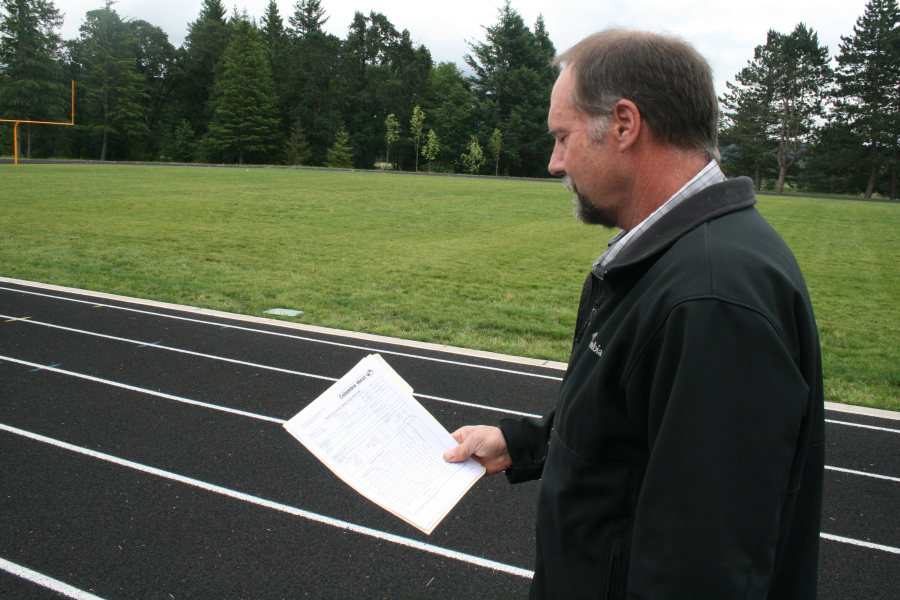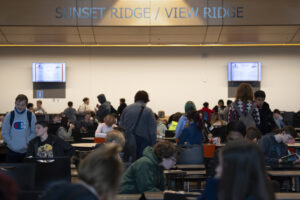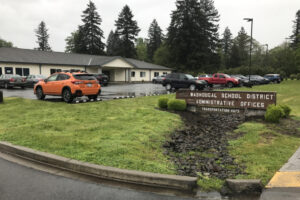A Washougal middle school teacher and former football coach is worried that a new Washougal youth football field, constructed near the newly opened Jemtegaard Middle School (JMS) and part of a $57 million Washougal School District (WSD) capital improvements bond passed by voters in 2016, may pose a serious safety hazard.
Brett Cox, an eighth grade science teacher at JMS, said he grew concerned about the field after spotting something odd on a bright, sunny day.
“I was looking at the new field and noticed it was literally glittering in the sunlight, so I start going out there and found shards of glass and plastic from thumbnail size to pinky size,” Cox said.
Cox, who has worked for WSD for more than 20 years, shared his discovery with his principal David Cooke and Washougal School District’s facilities manager Joe Steinbrenner the very next day.
He said both administrators told him they were unaware of any problem with sharp debris on the field, but would look into it.




